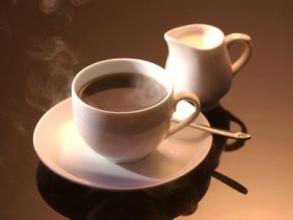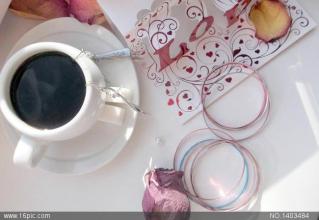Introduction of high-quality coffee beans in coffee flavor and taste area of Hassanda Coffee Garden in Ecuador
The Republic of Ecuador is located in northwestern South America. It is bordered by Colombia in the northeast, Peru in the southeast and the Pacific Ocean in the west. It covers an area of 256370 square kilometers and the coastline is about 930km long. The equator runs north of the border, and Ecuador means "equator" in Spanish. Minerals are mainly oil, mainly distributed in the Gulf of Guayaquil, and oil fields are also found in the Amazon plain. Gold and silver are distributed in Machaki and Saluma and other places. Copper is made in Machaki. There are sulfur mines in the Cologne Islands. In addition, there is iron, lead and so on. Forest area accounts for about 68% of the national area, mostly distributed in the eastern region, rich in valuable wood, such as mahogany and balsam (or Balsa wood). The coast is rich in tuna and shrimp. The port of Guayaquil, a giant turtle and lizard on Cologne Island, is the largest seaport in Ecuador. It faces the Pacific Ocean and backs against Mount Santa Ana. The nearby island of Pune serves as a natural barrier to protect the harbour from storms. There is a wharf in the south, which is more than 900 meters long. Ships from different parts of the world flying various flags are moored in the harbor. The port railway leads to the capital Quito, and highways connect Quito with other cities in the country. Bananas, cocoa, coffee, cotton and other products from all over the country are collected and distributed here. Guayaquil has also played an important role in the history of friendly exchanges between the peoples of China and Ecuador. As early as the 18th century, Chinese clothing, textiles and other goods were shipped to Ecuadorian cities through Guayaquil. In August 1978, the Chinese cargo ship Jialing River arrived here for the first time. Most of the import and export goods of the two countries are transhipped through Guayaquil.
The Galapagos Islands are located in the Pacific Ocean, about 1,000 kilometers off the coast of Ecuador. The archipelago consists of 13 major islands and small islands as well as reefs covering 8000 square kilometers and is one of the noblest national parks in the world. 97% of the territory belongs to Galapagos National Park, a protected area. The United Nations Educational, Scientific and Cultural Organization has declared this place a World Natural Heritage site.
These islands are volcanic landforms formed by magmatic eruptions. Even now, constant volcanic eruptions are shaping the geography of the archipelago. The Galapagos Islands are the products of one of the greatest volcanic activities in the world. The climate here is largely affected by ocean currents, including the Humboldt cold current and the El Ni ñ o warm current.
Galapagos is rich in species, warm and cold world of animals and plants, here is a natural paradise. The most famous animal is a prehistoric creature, the giant tortoise, also known as the Galapagos tortoise (one of the oldest animals in the world, has lived here for millions of years.) Iguanas are the only lizards that live in the sea, as well as land lizards and Darwinian finches. Other animals are blue-footed boobies, frigate birds, albatrosses, the only penguins that live in hot water, cormorants, and sea lions.
As the local arable land is very limited, Galapagos coffee is very rare. Since Manuel J.Cobos first cultivated coffee here in the late 19th century, the coffee seeds here have never been hybridized or changed. Therefore, coffee on Galapagos Island is considered to be one of the purest Arabica coffee beans in the world. Galapagos coffee has excellent quality, grows in fertile volcanic soil, and is rich in minerals such as phosphorus. The cultivation of coffee is not affected by any chemicals.

Important Notice :
前街咖啡 FrontStreet Coffee has moved to new addredd:
FrontStreet Coffee Address: 315,Donghua East Road,GuangZhou
Tel:020 38364473
- Prev

Introduction to the coffee flavor and taste of Santa Cruz Manor in Ecuador with a hint of flowers and fruits.
St. Cristobal is a larger island in the Galapagos archipelago. At 410m above sea level, there is a small lake called El.Junco, which forms streams along the rocks and volcanic rocks on the southern slope of the island. Mineral-rich fresh water moistens the land of St. Cristobal, keeping the soil moist and fertile. For here.
- Next

Introduction of Fine Coffee in Coffee Flavor and Taste production area of San Pedro Manor, Jamaica
The secret of why Blue Mountain coffee tastes pure: their coffee trees are all grown on rugged hillsides, and the picking process is so difficult that non-local skilled female workers are simply unable to do it. It is very important to choose the right ripe coffee beans when picking. Immaturity or ripeness will affect the quality of the coffee. The picked coffee beans are shelled on the same day, and then let them ferment for 1218 hours.
Related
- Does Rose Summer choose Blue, Green or Red? Detailed explanation of Rose Summer Coffee plots and Classification in Panamanian Jade Manor
- What is the difference between the origin, producing area, processing plant, cooperative and manor of coffee beans?
- How fine does the espresso powder fit? how to grind the espresso?
- Sca coffee roasting degree color card coffee roasting degree 8 roasting color values what do you mean?
- The practice of lattes: how to make lattes at home
- Introduction to Indonesian Fine Coffee beans-- Java Coffee producing area of Indonesian Arabica Coffee
- How much will the flavor of light and medium roasted rose summer be expressed? What baking level is rose summer suitable for?
- Introduction to the characteristics of washing, sun-drying or wet-planing coffee commonly used in Mantenin, Indonesia
- Price characteristics of Arabica Coffee Bean Starbucks introduction to Manning Coffee Bean Taste producing area Variety Manor
- What is the authentic Yega flavor? What are the flavor characteristics of the really excellent Yejasuffi coffee beans?

